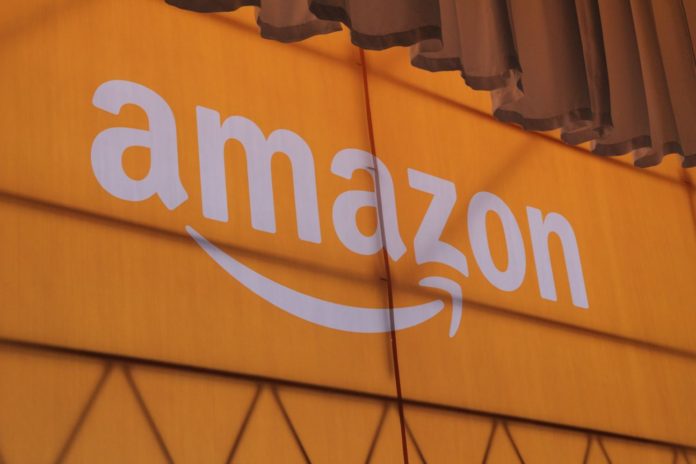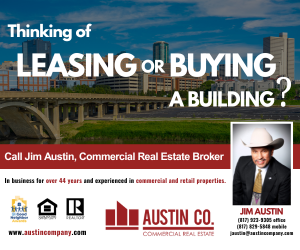By Joseph Pisani
Associated Press
and FWBP Staff
Amazon, ending months of speculation and jousting among economic development officials around the country, said it will split its much-anticipated second headquarters between New York and northern Virginia.
Each will get 25,000 jobs. In addition, the online retailer said it will open an operations hub in Nashville, creating 5,000 jobs.
One finalist for the HQ2 location was the Dallas area, which was apparently in the discussion for the biggest economic development prize in years up until the end.
The Dallas Regional Chamber led the DFW Region’s unified response to Amazon’s HQ2 opportunity.
Working closely with the Fort Worth Chamber and other regional economic development partners, elected officials, community leaders, and the State of Texas, the Dallas Regional Chamber organized and delivered a bid that led to the area making the initial cut.
“This was a unique chance to reinforce with Amazon – and the world – the many reasons DFW has been so successful in attracting companies, jobs, and individuals seeking a wonderful quality of life in one of the most affordable places in the nation,” said Dale Petroskey, CEO and president of the Dallas Regional Chamber.
“Make no mistake, this has been a ‘win’ for our region regardless of the outcome. Our business community grows and expands by the day, and our momentum as a destination of choice has only increased as a result of being a finalist for HQ2,” Petroskey said.
In May, Arlington, Texas, said it was “no longer moving forward” in the competition and released details of the incentives it offered the online retailer.
Arlington said May 15 it had been “one of the very select finalists in North Texas asked by Amazon to make an in-person pitch to company executives and provide a site visit for our proposed HQ2 site,” but it was no longer involved.
Dallas offered a $600 million incentive package, including tax abatements. That doesn’t include the incentives offered from the state, which could have been as much as $500 million.
A portion of the incentive package was tied to hiring locals and Dallas proposed Amazon commit $100 million toward addressing race relations, poverty and creating green space.
Amazon had set off the competition last year and made clear that tax breaks and grants would be a big factor in its decision. In January it released a list of 20 areas still in the running for the $5 billion project that could employ up to 50,000 people, among them the Dallas area.
Arlington offered incentives estimated at $921 million, including a 10-year property tax abatement and a grant of additional incentives for hiring Arlington residents. The city proposed the 200-plus-acre Globe Life Park, soon-to-be-former home of the Texas Rangers baseball team, as the potential site. The team will move into a new stadium in 2020.
However, other areas in the DFW area remained under consideration.
The Fort Worth Chamber, which has just embarked on a new economic development focus, called Fortify, used the Amazon competition to understand the area’s strengths and weaknesses.
Amazon has several fulfillment centers in Texas, with about 5,000 employees in North Texas.
“This was an historic opportunity for all DFW-area communities to work together, leverage all of our assets and showcase our region,” said Brandom Gengelbach, executive vice president of economic development for the Fort Worth Chamber of Commerce. “We put our very best foot forward in a way that will serve us well in the pursuit of future economic development opportunities.”
The Dallas chamber noted that in the last eight years, DFW has added more than 1 million new residents, growth fueled by more than 120 corporate headquarter relocations, hundreds of local company expansions and the creation of more than 750,000 new jobs.
“We like to win, and we’re used to winning, so while we are disappointed, we understand Amazon’s decision is one they believe is best for their company at this time,” said Mike Rosa, senior vice president of economic development at the Dallas Regional Chamber.
Just being a finalist will prove to be a major benefit to the region, said Chris Wallace, president and CEO of the North Texas Commission.
“Amazon has a thorough, well-vetted process and other companies will take note of what we have to offer in North Texas: low cost of doing business, strong quality of life, low regulatory climate, and a willing and able workforce. There will undoubtedly be other companies looking to move here because of the spotlight put on our region by Amazon,” Wallace said.
The technology-focused retail giant’s New York location will be in the Long Island City neighborhood of Queens, while its Virginia offices will be in a part of Arlington, Virginia, that Amazon is calling National Landing, a made-up moniker for an area around Reagan National Airport that encompasses Crystal City and Potomac Yard.
The decision ends intense competition among North American cities to win Amazon and its promise of 50,000 new jobs. Some locations tried to stand out with stunts, but Amazon made clear that it really wanted incentives, like tax breaks and grants. The company received 238 proposals before narrowing the list to 20 in January.
Amazon is referring to the two new locations as headquarters even though with 25,000 jobs each, they would have fewer workers than its Seattle hometown that houses more than 40,000 employees. Amazon said Seattle will remain as one of Amazon’s three headquarters.
The extra space will help the rapidly growing company. Launched in 1995 as an online bookstore, Amazon now produces movies, makes voice-activated Echo devices, runs the Whole Foods grocery chain, offers online services to businesses and designs its own brands of furniture, clothing and diapers.
There were early signs that Amazon had its sights set on New York and northern Virginia. Among its 20 finalists, the company had selected two locations in the New York metro area and three in the D.C. area.
Being near the nation’s capital could help Amazon with lobbying efforts as the company, and other fast-growing tech giants, face rising scrutiny from politicians. Plus, CEO and founder Jeff Bezos has a home in Washington D.C., and personally owns The Washington Post.
Amazon’s workforce has ballooned to more than 610,000 worldwide, and that’s expected to increase as it builds more warehouses across the country to keep up with online orders.
The company recently announced that it would pay all its workers at least $15 an hour, but the employees at its second headquarters will be paid a lot more.
Alan Suderman also contributed to this report from Richmond, Virginia; and Matthew Barakat contributed from Arlington County, Virginia as did the FWBP Staff.
Sidebar:
Chamber respond to Amazon decision
The Dallas Regional Chamber led the DFW Region’s unified response to Amazon’s HQ2 opportunity.
The DRC worked closely with the Fort Worth Chamber of Commerce and dozens of regional economic development partners, elected officials, community leaders, and the State of Texas, to organize and deliver a comprehensive and compelling bid.
The Fort Worth Business Press spoke with Brandom Gengelbach, executive vice president of economic development for the Fort Worth chamber about the Amazon decision.
FWBP: Do you have an idea where this area – Fort Worth in particular – might have fallen short compared to the sites selected? If so, what does this area need to work on for the next opportunity?
Gengelbach: We didn’t get that information from Amazon, but I think the access to elected officials in D.C. was appealing to Jeff Bezos, as well as the access to talent. Beyond incentives, we must continue to improve our strong business environment, including infrastructure, transit, public education funding, and a welcoming culture that respects all. These are things North Texas chambers of commerce will be advocating for in the upcoming state legislative session.
FWBP: Alternatively, what were this area’s strong points? Where did we excel?
Gengelbach: The same places we always do: [Dallas Fort Worth International Airport], central U.S. location, easy international access, labor availability, no state income tax, affordable cost of living, great weather, quality of place, workforce availability of metro area’s 7-plus million people.
FWBP: Where does this leave this area in terms of economic development?
Gengelbach: We’re stronger by working together and we’re in a great position. Making the top 20 list validates that DFW has what it takes to be a contender for headquarters project.
We have a more robust repository of information about the region than we previously had.
We’ve been using information about sites, workforce and education for numerous recruiting and expansion prospects all year. The Chamber has 54 project proposals in the pipeline now, and expects more now that Amazon has made its decision public and others may have been holding off.
FWBP: What is the takeaway for the business community? What should its members do?
Gengelbach: Engage with the chamber to be at the table with us as we decide how to go forward in marketing Fort Worth, developing talent, supporting entrepreneurs and advocating for business-friendly public policy.









